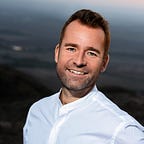Discovering The Birthplace Of Champagne
Explore France’s famous wine region.
Listen to Stephen’s travel tales and insights on the Kated Travel Podcast.
The region of Champagne is just about two hours from Paris. It’s definitely within reach for a day trip, but you can also stay the night there.
And there are two important places to visit.
The heartbeat of Champagne is a town called Épernay. It’s an old town, surrounded by rows and rows of vines. The fields go on seemingly forever, over and around the hills.
The other place is Reims. It’s a bigger city, and there’s more to see and do there that’s non-champagne related.
You can definitely have amazing champagne in Reims, but Épernay is where you have all the big producers — and it’s also where you can go out to meet the small producers.
And both provide very different experiences.
Visit Épernay and you can walk or drive Avenue the Champagne. Along this avenue are the world’s most famous champagne producers, the big players. Moët & Chandon, Mercier. Now, these producers are a good place to start. They’re grand, they’re ostentatious, they’re over the top — they’re the places you want to see just to see them — to see how champagne has come from being a drink that was created here to being the most famous high-end drink in the world.
So you can go to Moët & Chandon, and see the style they have used in their winery. It’s quite illuminating to see how each producer along this avenue tries to outdo the next; to get a feel for what they do; to walk around the cellars and do some tasting.
But because the producers along Avenue de Champagne are the biggest in the world — let’s remember producers like Moët & Chandon have been bought by multinational drinks companies — you’re not going to have a completely private experience.
On the other hand, as you start going away from the town of Épernay, it’s really easy to visit the boutique producers. To taste champagne that the French drink, champagne that is drunk by the residents of Épernay.
Because the people in Épernay don’t drink Moët & Chandon. There’s an inflated price tag, it’s a lot about the hype. Some of the best champagne is really found with the boutique producers — and it’s certainly with them you will find the best value.
And local guides can arrange for you to meet the wine makers, the cellarmasters, the people behind creating champagne that is still very independent and boutique.
Now, if you go to Avenue de Champagne a great highlight is you can go underneath these kinds of castles and wineries and find seemingly endless kilometers of cellars, where tens of millions of bottles of champagne are stored.
When you go to the boutique producers, you can’t do that. But it’s a lot easier to have a very private experience. You can visit wineries that are not open to the public and meet the people responsible for creating champagne. You can see the production methods, follow them from the vines to the processing to the cellar — and then sit down, gaze across the vineyards and sample all the different styles that are produced at this winery.
Because it’s not just one champagne they make — we are talking 10, 12, 15 different kinds of champagnes in a single winery.
I went wine tasting in Champagne, and it was a great experience — a whole-day affair in one boutique producer. I was there for five or six hours, drank way too much — and then spent the night camping in a tent, drinking 150 year-old bottles of champagne that I had just bought directly from the producer.
This was something that was on my bucketlist — to go camping in Champagne — and I really loved the contrast between the high-end champagne experience the very basic campsite experience.
But if you want to do spend the night in Champagne, you don’t need to do the same I did. There are wonderful five-star hotels there.
There are also wineries where you can spend the night, so you wake up to see rows and rows of vines stretching downhill in the late morning sun, in the most authentic ambience of champagne production.
By Stephen Bailey. Edited by Beatriz Becker.
For more insights and inspiration, check us out at Unorthodox Travel.
